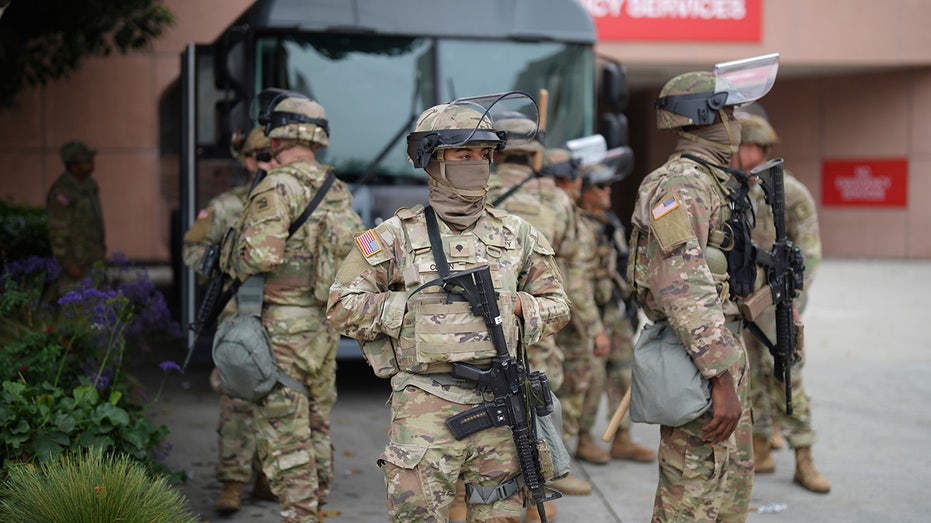Two days after Charlie Kirk’s assassination, a surreal scene played out at a press briefing, where Utah’s Republican governor, Spencer Cox, read messages allegedly engraved on the shooter’s bullets. “If you read this,” the 50-year-old conservative statesman recited somberly, “you are gay.” He then plodded, as if part of a dirge, through each letter in “LMAO,” the acronym for “laughing my ass off.”
The bizarre juxtaposition — puerile troll-speak uttered in the grave tones of an elected leader attempting to guide the country through a crisis — captured a troubling reality of the digital age: A new generation of headline-grabbing shooters is emerging, one that thinks and speaks in the inscrutable language of youth internet culture. Younger generations of Americans grew up with this lingua franca, a forked tongue wrapped in irony and trolling that many journalists, elected officials, the public at large and perhaps even those who trade in its shibboleths themselves do not fully understand. Now, when members of those generations commit violence, they do so with all the byzantine internet references and confounding memes with which their counterparts rib one another in livestream chats. But what that messaging says about the ideologies driving them — and in some cases, whether they are driven by any ideology at all — is anyone’s guess.
And plenty of people are guessing. From the start, the few publicly available clues about alleged Kirk shooter Tyler Robinson — meme phrases engraved on bullets, photos of him in memey Halloween costumes mined from his family’s social media accounts — became instant fodder for speculation. Law enforcement wrote in part of a bulletin published in the Wall Street Journal that the bullets referenced “transgender and antifascist ideology.” The Journal later published an editor’s note saying that “Justice Department officials later urged caution about the bulletin by the Bureau of Alcohol, Tobacco, Firearms and Explosives, saying it may not accurately reflect the messages on the ammunition.” Nonetheless, the idea that the shooter was antifascist, or transgender, or otherwise LGBTQ+ ripped through discourse — with the help of some conservative politicians. In a CNN appearance Tuesday morning, Republican Sen. Ted Cruz of Texas incorrectly claimed the shell casings included “transgender slogans,” misquoting one of the messages and saying he had been told it was “an online meme for transgenderism.” Rather, it may be a meme used to attack the furry subculture.
Cox didn’t speculate about the meaning of the engravings as he read them off, but he did say that one of them — “hey fascist! CATCH!” — “speaks for itself.” What precisely it said for itself, however, wasn’t so obvious after gamers pointed out that the message also included the control inputs for calling in a bomb strike in the video game Helldivers 2, in which players assume the role of soldiers in a satire of militaristic fascism. Was this an anti-fascist message or just a wink at gamers? (The supposed links between video games and violence, it must be noted, have been repeatedly debunked.) Cox has since said that the shooter subscribed to “leftist ideology” based on police interviews with people close to him. He has not elaborated on that claim, and police have not revealed an established motive, although the FBI released text messages they said were from Robinson to his roommate and romantic partner saying he “had enough of [Kirk’s] hatred.”
Other supposed clues led some online to speculate Robinson was on the far right. “Tyler Robinson, the alleged assassin of Charlie Kirk, is speculated to be a Groyper based on his memes and rhetoric,” posted an account purporting to represent the hacking collective Anonymous to its millions of followers on X. “Groyper” refers to the white nationalist, meme-pilled followers of neo-Nazi influencer Nick Fuentes. Social media soothsayers gazed into the pixelated tea leaves, hoping to see swastikas in the lyrics to the Italian song “Bella Ciao,” which the shooter engraved on a shell casing, or in the old Halloween photos showing Robinson riding on the back of an inflatable Donald Trump or dressed as a gopnik offshoot of Pepe the frog, the now-anachronistic alt-right meme that evolved into the groyper mascot. Groypers had hassled Kirk at public appearances over the years for what they saw as his insufficiently radical conservatism. (Fuentes has forcefully denied any connection to the shooting and told his followers he would “disavow” and “disown” any who “take up arms.”)
But as the internet quickly pointed out, “Bella Ciao” is both an anti-fascist anthem from post-WWII Italy and a remixed track on a groyper Spotify playlist. The song also features prominently in another video game: Far Cry 6. As for the old Halloween costumes, did they prove the shooter was a Fuentes fanatic, or just someone with an internet connection and an appreciation for meme culture?
Or was it all just one big troll? Cynthia Miller-Idriss — a sociologist, American University professor and author of multiple books on extremist movements, including Hate in the Homeland: The New Global Far Right and Man Up: The New Misogyny and the Rise of Violent Extremism — says that young people she’s interviewed would have found Cox reading shitposts at a press conference “hilarious.” The shooter allegedly said as much himself in a text message officials released on Tuesday. He mentioned another of his bullet engravings, inscribed with a reference to the same niche meme Cruz misinterpreted: “the fuckin messages are mostly a big meme, if I see ‘notices bulge’ on fox new (sic) I might have a stroke.”
“The idea that an adult is struggling with codes that [young people have] created is part of the point,” Miller-Idriss says.
Kirk’s assassin isn’t the first shooter shaped by digital esoterica. In 2019, the 28-year-old white supremacist who shot up a mosque in Christchurch, New Zealand, published a manifesto full of memes and referenced a meme out loud in a livestream of the massacre. The 17-year-old Antioch High School shooter in Nashville used incel memes and was reportedly motivated by sexism and racism. And just weeks ago, the 23-year-old Annunciation Catholic School shooter in Minneapolis posted images of weapons adorned with racist, anti-religious and antisemitic messages — but also meme phrases.
While each of these killers brought up internet culture, they also subscribed to more or less explicit worldviews of the kind you find in deranged manifestos — including, in some cases, their own. We may yet learn that the same is true of Kirk’s shooter. But the words he carved into bullets bear no obvious allegiance to anything other than bloodshed. Whatever we ultimately discover about his motives, the information he’s given us so far offers only internet nihilism distilled into its purest form: lulz.
Despite the incoherence of the shooter’s missives, however, the slipshod efforts at translating them into something logical — or even to deliberately spin them in service of a political narrative — did deliver a few clear insights.
First, our political discourse is ill-equipped to scrutinize the long and convoluted canons of Reddit, 4chan, Discord and innumerable other sites, video games and platforms that inform and reinform digital culture — an ambiguous and constantly shifting sand of in-jokes and callbacks in which any semblance of clear meaning sinks. Just a few years ago, elected officials were widely mocked for their inability to adequately question tech CEOs about their platforms. Now, it seems they’ll need to accurately translate the cryptic riddles users create on those platforms if they are to comprehend threats of violence against themselves and their constituents. That challenge is even more dire for law enforcement. I’m reminded of Adolescence, the award-winning Netflix show about an incel-inspired murder lauded for its unsettling realism. In one episode, a detective in the case grasps at straws until his young son schools him on the meaning of certain emojis, turning up a lead.
Second, artifacts that originated in extremist spaces have proliferated and assimilated into the broader online zeitgeist. Ask a middle schooler what “sigma” means, and they’ll probably answer you after an annoyed eyeroll. But they may not know the term was popularized by incels, or “involuntary celibates,” the online community that radicalizes young men with extreme misogyny. At this point, “sigma” is just common parlance, or else a winking parody of common parlance — if it hasn’t already been replaced by the next term du jour.
“Some of it is the mix of memes or elements that move from online, fringe, subcultural communities into the mainstream, and get sort of ‘de-meanified,’” Millier-Idriss says. Pepe the frog is a prime example. Years ago, teachers watched for Pepe as a sign of white supremacist extremism. Now, he’s not so much a sign of white supremacy as a sign of exposure to it — or at least to memes and jokes about it, or to memes and jokes about the memes and jokes — which applies to most people who have WiFi.
In pointing to the shooter’s few memes-turned-bullets, even those of us with a pathological fluency for extreme internet-speak might as well be pointing at clouds. And even if we do see anything in them, it may not map neatly onto a political ideology you’ll find in Congress. The politics of the internet operate across different axes than just left and right, Democrat and Republican. Your views on immigration or tax policy or abortion might mark you as blue or red in this country — but does your favorite meme?
That leaves a void of understanding into which Americans drop their fears of stochastic terrorism. “It’s also increasingly the case that we now have many more attacks over the last several years that don’t fall in or never will fall into the kind of pattern that is identifiably linked to one ideology or another,” Miller-Idriss says. “When it’s not identifiable, it leaves people feeling kind of unmoored. How could this happen? If we can’t counter the radicalization of this person toward this idea, then how do we know how to keep ourselves safe, or our community safe?”
The answer won’t be written on a bullet.
.png)















 English (US)
English (US)